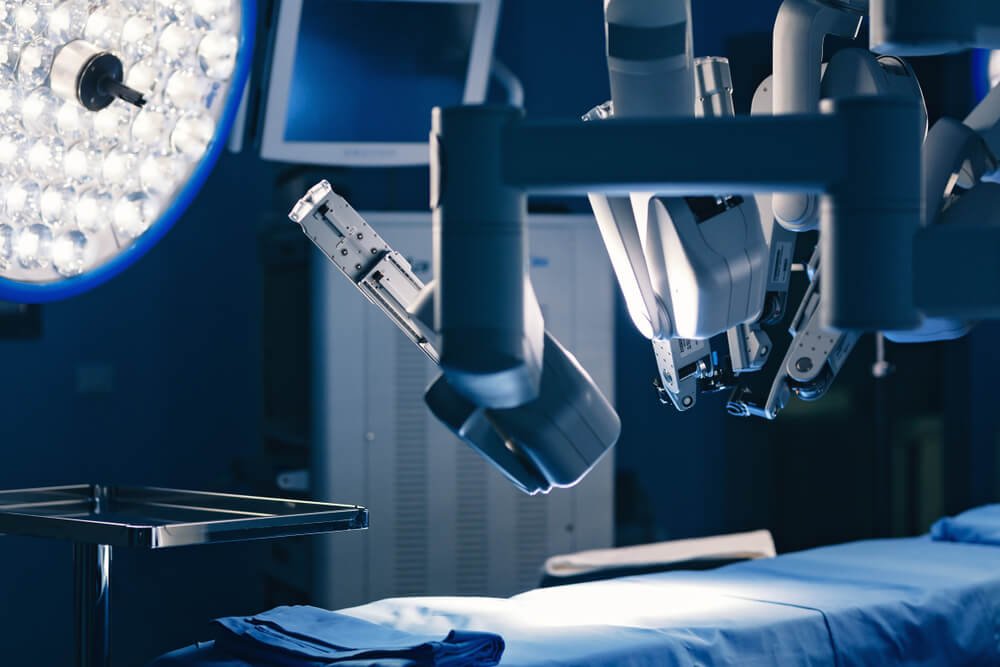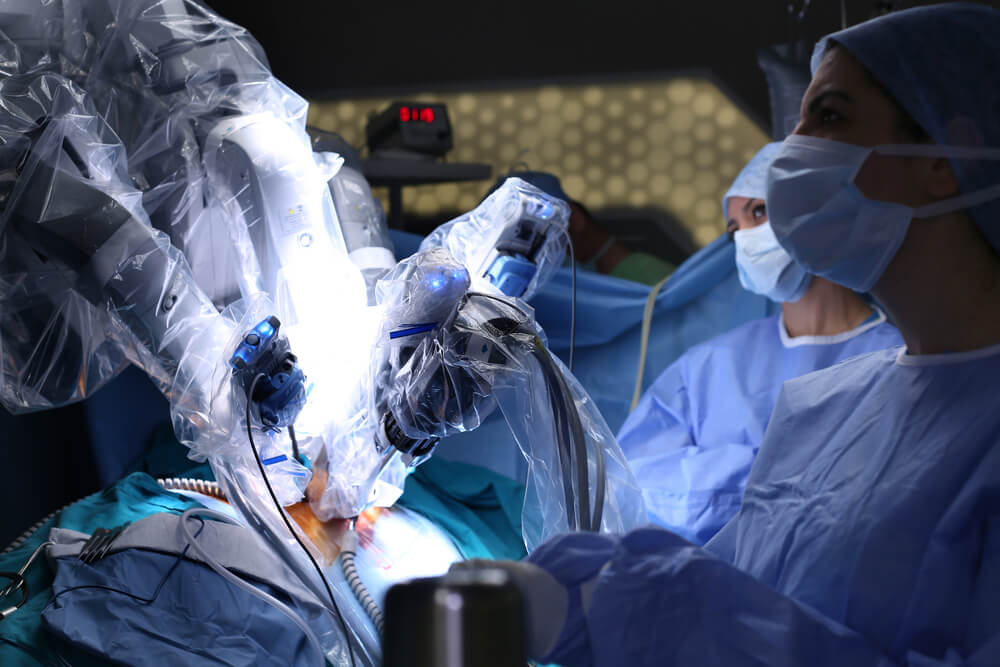Robotic surgery is a type of surgical procedure that is less invasive than open surgery. Robotic surgeries create a more painless surgery process for both patients and doctors. These types of methods are typically less invasive than alternate surgeries or enhance the capabilities of open surgery.
Benefits for Robotic Surgeries
The benefits of robotic surgery over open are faster recovery time and shorter hospital stays. Robotic surgery can dramatically decrease the possibilities of postoperative pain, scarring, and infection.
Robotic Gynecologic Surgery
For years, the standard approach to gynecologic surgery has been open surgery and laparoscopic procedures. Open gynecologic surgery entails a large incision in the abdomen so the surgeon can access the uterus.
Open surgery puts a lot of trauma on the body and causes longer recovery time significantly with higher pain. That’s why a Women’s Care of Bradenton, we offer the latest innovative approach: robotic surgery.
We care about our patients, and we want to make the recovery process shorter and as comfortable as possible.

Five Types of Robotic Surgery for Women
Robotic options are available for women for many procedures. Some of the procedures can include robotic hysterectomy, myomectomy, oophorectomy, ovarian cystectomy, and endometriosis resection.
- Hysterectomy
A partial hysterectomy is a surgery to remove your uterus. A full hysterectomy removes your uterus and cervix.
A hysterectomy treats uterine fibroids, endometriosis, cancer, or precancer, and uterine prolapse. A hysterectomy can solve symptoms related to conditions such as abnormal vaginal bleeding and pelvic pain.
What to Expect
Robotic surgery is available for a hysterectomy. Small incisions are made on the abdomen to create an entry for the robotic instruments.
The robotic hysterectomy allows for a magnified 3D view with the ability of better precision. The surgery is under more control with a more exact approach.
During the procedure, your doctor will direct the instruments that remove the uterus. Depending on your condition, the surgeon may also remove both fallopian tubes and the ovaries.
Recovery
Typically, a night recovery at the hospital is typical to monitor you for the best health possible. Pain medication can mitigate postoperative pain. You are encouraged to get up and to move gently as soon as you can.
There is usually less blood loss, and women experience much less postoperative pain because of the less invasive approach. You are typically able to return to daily activities much sooner and more comfortably with a robotic hysterectomy. Many women experience vaginal bleeding for a few days or weeks after a robotic hysterectomy.
- Myomectomy
A robotic myomectomy uses special robotic tools to remove fibroids, a type of growth on a women’s uterus. Estrogen and progesterone cause fibroids to grow on a women’s uterus. Pregnancy hormones can encourage the development of fibroids.
Some fibroids are harmless, and some women do not experience symptoms of their fibroids. However, some women experience chronic pain or excessive bleeding as a result of fibroids. A robotic myomectomy is the least invasive way to remove fibroids.
A doctor may also suggest surgical removal if the fibroids have developed on or outside the uterine wall. Robotic myomectomy has a low-risk rate.
However, risks may include excessive blood loss and infection. Surgeons take extra steps to avoid these complications.
What to Expect?
You will be under general anesthesia during a robotic myomectomy. The surgeon will insert a camera into small incisions.
The doctor will sit at a separate console directing the tools that complete the surgery.
Robotic myomectomy requires much smaller incisions than an open-surgery alternative. The fewer incisions made, the more comfort patients experience after surgery. You may stay at the hospital for one night while the treatment team aids in your pain and comfort.
Some women experience vaginal bleeding for days to weeks after the procedure. During the remainder of the recovery, your doctor may suggest light exercise. You will want to avoid strenuous activity for two to four weeks.
- Oophorectomy
An oophorectomy is oca surgery to remove one or both of the ovaries. The ovaries are in the pelvis. They are round-shaped organs that sit on either side of your uterus. Your ovaries contain eggs and hormones that cause your period and fertility.
Bilateral oophorectomy would be the name for the procedure if it involved removing both ovaries. If you need one ovary removed, the procedure is called unilateral oophorectomy.
Women may be a candidate for an oophorectomy if:
- She has ovarian cancer.
- She has endometriosis.
- Her risk is high for ovarian or breast cancer.
- She has a tubo-ovarian abscess.
- She has benign ovarian cysts or tumors.
Risks
The procedure is relatively safe. However, as with any surgery, there are risks. Infection, bleeding, tumor rupture, or the inability to become pregnant.
If you want to become pregnant, speak with your doctor about what options are best for you. Depending on your condition, there may be an approach that allows you to remain fertile.
Menopause
A Bilateral oophorectomy will cause women to experience menopause if they have not already. Ovaries fill the body with estrogen and progesterone. Without ovaries, the body becomes deprived of those hormones. The possible symptoms of menopause are:
- Women can experience hot flashes and vaginal dryness.
- Women should watch for a change in mental health issues such as depression or anxiety. It is essential to monitor your mood and address how you feel mentally.
- Lower sex drive.
What to Expect
You will be asleep during the procedure. During a robotic oophorectomy, the surgeon will make two small incisions on the abdomen. The surgeon will place a small camera and instruments to complete the procedure.
The possible complications of menopause are heart disease, memory problems, and osteoporosis. For younger oophorectomy patients, early menopause is a risk as well. Hormone therapy can help offset early menopause.

- Ovarian Cystectomy
An ovarian cystectomy is a surgery to remove a cyst of the ovaries. Ovarian cysts can be harmless. However, some cause chronic pain and heavy bleeding.
What to Expect
You will be under anesthesia to sleep. A laparoscopic option uses a tiny camera and tube to guide your surgeon. There are small incisions made on your abdomen. The surgeon will remove the cysts with instruments as minimally invasive as possible.
- Resection of Endometriosis
Endometriosis is a condition in which uterine tissue grows outside of the uterus. A doctor may suggest having a resection of endometriosis if:
- You are experiencing extreme pain.
- You are at risk of losing fertility.
- You are experiencing heavy and chronic bleeding.
What to Expect
A robotic approach is the least invasive. Surgeons can treat the lining of the uterus through small incisions and more precision with robotic assistance.
The doctor will remove growths and scar tissue with intense heat to treat endometriosis and its symptoms without damaging healthy tissue.
Women’s Care of Bradenton
The benefits of robotic surgeries are clear. They allow surgeons to be more precise. Women experience a less invasive approach and typically a faster recovery.
If you have any health concerns, don’t hesitate to reach out to us. Please schedule a consultation today and let us put your health first. We offer top-quality care, including minimally invasive surgery using robotics.


